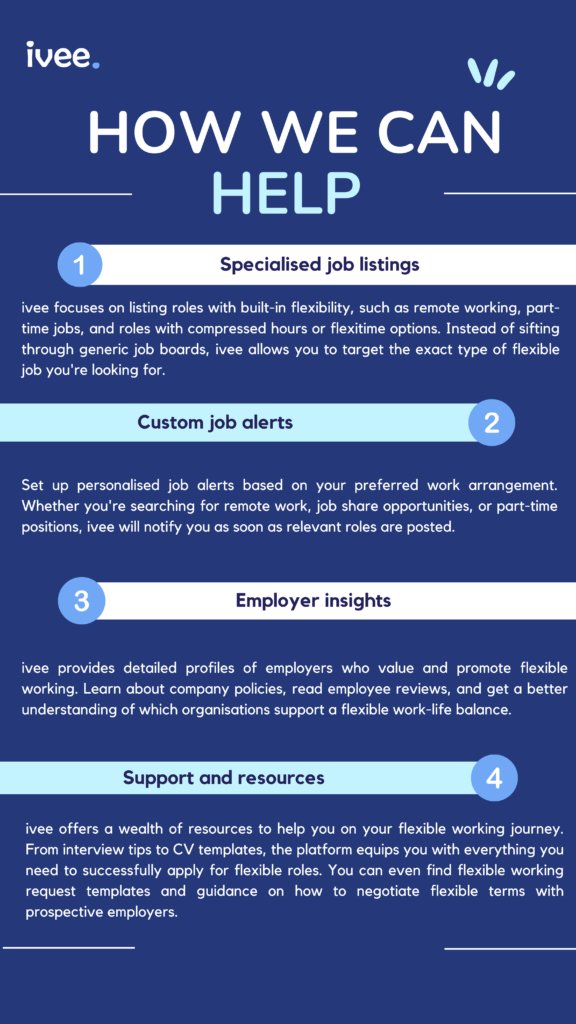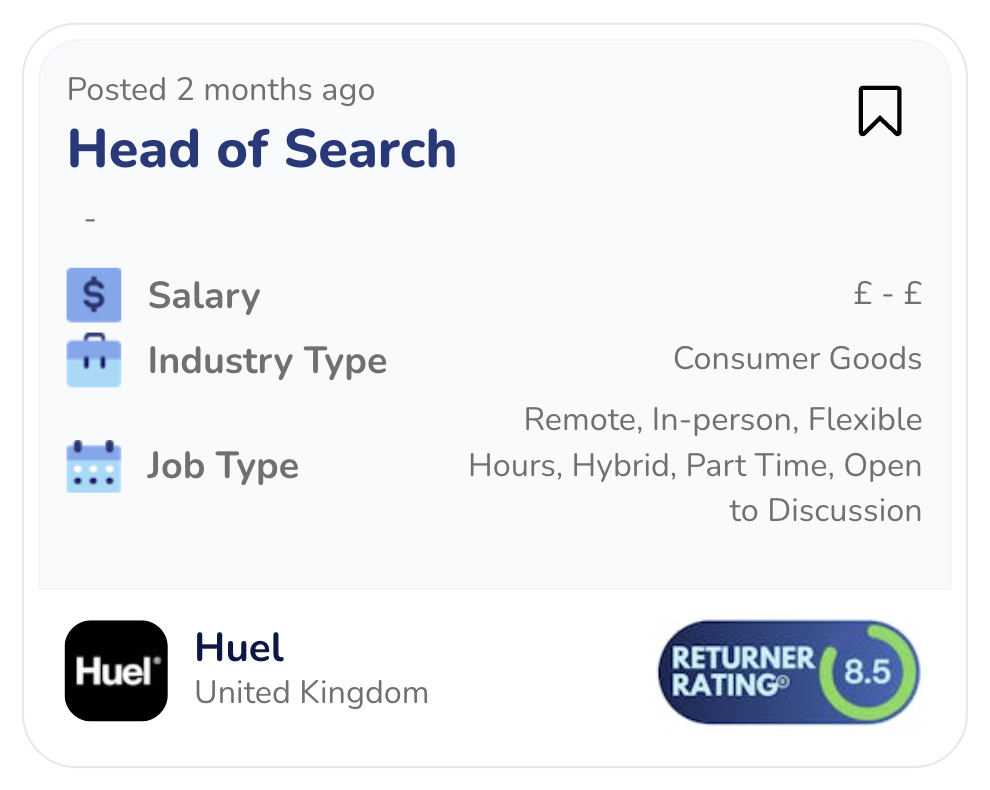Covid has transformed the way we work, offering employees more control over their schedules and helping to balance personal and professional commitments. Whether you're looking to reduce commuting, spend more time with family, or improve your overall well-being, flexible working can offer the freedom you need. But how do you go about making a successful flexible working request? In this guide, we’ll explain the steps, provide templates, and offer insights into finding flexibility policies at a company.
Jump to:
- Types of Flexible Work
- Why Request Flexible Working?
- Finding Flexibility Policies at a Company
- Step-by-Step Guide: How to Make a Successful Flexible Working Request
- Flexible Working Hours Request Template
- Common Reasons for Flexible Working Requests
- What to Do if Your Flexible Working Request is Denied
- How ivee Can Help You Find Flexible Jobs
- FAQs: Requesting flexible working in the UK (2025)
- Conclusion
Types of flexible work
Flexible working can come in many forms, depending on your needs and the nature of your job. Before we delve into how to make a successful flexible working request, let’s take a look at some of the common types of flexible work arrangements:
Compressed hours
- Work the same number of hours across fewer days (e.g., four longer days instead of five).
Part-time work
- Work fewer hours than a standard full-time schedule, which can be helpful for balancing personal commitments.
Flexitime
- Have control over when you start and finish work, as long as you work your contracted hours.
Job sharing
- Two employees share the responsibilities of one full-time position, each working part of the week.
Remote working
- Work from home or another location outside the office, either full-time or part-time.
Staggered hours
- Begin and end your working day at different times from your colleagues but still work the same hours.
Why request flexible working?
There are many valid reasons for filing a flexible working request, and understanding your own motivations is key to making a strong case. Some of the most common reasons for wanting to learn how to make a successful flexible working request include:
- Childcare: Flexible hours help parents manage school runs, nursery pick-ups, and after-school care.
- Caring for Relatives: Flexibility allows you to care for elderly or disabled family members.
- Health and Wellbeing: If you have a chronic illness or need to manage mental health, working flexibly can support your personal needs.
- Reducing Commute Times: Long commutes can negatively impact your productivity and well-being.
- Further Education: Balancing work with ongoing education can be challenging without flexible hours.

Finding flexibility policies at a company
Step-by-step guide: how to make a successful flexible working request
Once you’ve checked your company’s policies and clarified your own reasons, you’re ready to request flexible working. Here’s a step-by-step guide:
Evaluate your reasons for a flexible work request
Understanding your motivations is key. For example, if you’re requesting flexible hours to manage childcare, explain how this will support your ability to balance work and family life while still meeting your work responsibilities.
Submit your request in writing
It’s a good idea to put your request in writing, either via email or a formal letter, to ensure there is a clear record of your application.
Prepare for a discussion
Your employer may have questions or concerns. If you wish to maximise your chances of making a successful flexible working request, be prepared to discuss how you’ll maintain productivity, manage communication, and handle any potential challenges that may arise from the new arrangement.
Common reasons for flexible working requests
When crafting your request, it’s important to clearly outline your reasons. Some of the most common flexible working request reasons include:
- Childcare: Balancing school pick-up and drop-off times.
- Caring for Relatives: Supporting a family member with a disability or illness.
- Health Concerns: Managing long-term health conditions or mental health.
- Commute Reduction: Reducing time and stress spent travelling to work.
- Professional Development: Balancing further studies or training alongside work.

What to do if your flexible working hours request is denied
If your request is declined, ask for feedback on the reasons why. Sometimes, employers may have concerns about staffing or operational needs that can be addressed with a compromise. You might suggest a trial period to demonstrate how the arrangement can work. If your request is still rejected, you may have the right to appeal depending on your company’s policies and employment laws.

How ivee can help you find flexible jobs
If you’re looking for flexible job opportunities but aren’t sure where to start, ivee can help. As a platform dedicated to connecting women returning to work with diverse and flexible roles, ivee offers a range of tools to make your job search easier. Here’s how ivee can support your journey towards a more flexible working life.
FAQs: Requesting flexible working in the UK (2025)
Join the ivee community!
Join our Facebook group. Whether you’re looking to reconnect with like-minded returners, seek advice on returning to work after maternity leave, or share your experiences, our Facebook community is here to help you navigate your journey back into the workforce.
You’ll find:
👉 Latest regulatory changes regarding maternity leave
👉 CV templates for women returning to work
👉 Latest industry updates
👉 Resources and guides to help you on your job hunt
👉 Confidence-building events, webinars and advice on all aspects of returning to work
Our Facebook community
Make your flexible working application work

Exploring how to make a successful flexible working request doesn’t have to be daunting. By preparing a clear, thoughtful proposal and showing how the setup can benefit both you and your employer, you can increase your chances of success. Whether you’re seeking flexible jobs, compressed hours, or part-time work, understanding your company’s policies and your own needs is key.
Ready to start your flexible working journey?
Download our Flexible Working Request Template today and take the first step towards a better work-life balance!
Access the templateFeatured Blog Posts











